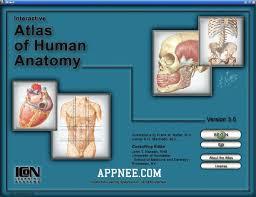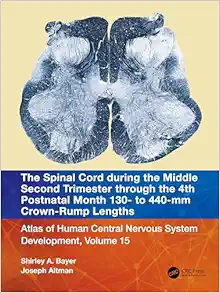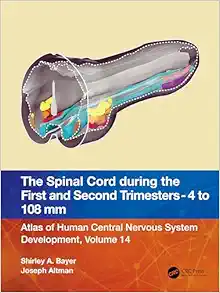Netter Interactive Atlas Of Human Anatomy
10 $
Delivery time: Maximum to 1 hours
Atlas Overview The Interactive Atlas of Human Anatomy Version 3.0 provides users with versatile tools for studying, teaching, and learning about anatomical structures. The Atlas tool set includes the following features: – The artwork of Frank H. Netter, MD and Carlos A. G. Machado, MD allows instructors, students, and practitioners to see in great detail the intricacies of anatomical structures. Plates can be displayed with or without identifying labels and leader lines. You can page through the plates individually or search for a plate by its region, system(s), or associated terms. Plates can also be printed with or without labels. – Use the Spoken Labels feature to hear the correct pronunciation of any anatomical label in the Atlas. – The Study Guide feature allows instructors to direct student learning toward certain subject matter. An instructor can select plates and the specific anatomical labels upon which the student should focus, or students can create their own study guides. The instructor or student can save the study guide for later retrieval or editing. – The Test feature allows students and instructors various options for creating practice tests or custom exams. – Practice Tests allow students to quickly test their knowledge of a region, a system, a sub-region, or a particular plate by selecting the anatomical structure named in the “question.” The user can designate the number of items to be included in the practice test and then use the Random Selection feature to direct the program to choose the items for that test. – For those preparing for a test over certain material, the Pretest feature allows users to drill themselves by navigating to plates that include the test items, and then rolling over the test items to see the correct answer labels displayed. – The Test feature allows the student or instructor to select the preferred test mode: Locate Structures, in which the student is given the name of an anatomical feature and then identifies it, or Name Structures, in which the student is asked to name specified features. As you work through the Interactive Atlas of Human Anatomy, click the Help button if you want more information on any of these or other features. You need a monitor capable of supporting thousands of colors (16-bit color depth) at a resolution of 1024×768 to run the Interactive Atlas of Human Anatomy.
Netter Interactive Atlas Of Human Anatomy
Atlas Overview
The Interactive Atlas of Human Anatomy Version 3.0 provides users with versatile
tools for studying, teaching, and learning about anatomical structures. The Atlas tool set
includes the following features:
– The artwork of Frank H. Netter, MD and Carlos A. G. Machado, MD allows
instructors, students, and practitioners to see in great detail the intricacies of
anatomical structures. Plates can be displayed with or without identifying labels
and leader lines. You can page through the plates individually or search for a
plate by its region, system(s), or associated terms. Plates can also be printed
with or without labels.
– Use the Spoken Labels feature to hear the correct pronunciation of any
anatomical label in the Atlas.
– The Study Guide feature allows instructors to direct student learning toward
certain subject matter. An instructor can select plates and the specific anatomical
labels upon which the student should focus, or students can create their own
study guides. The instructor or student can save the study guide for later
retrieval or editing.
– The Test feature allows students and instructors various options for creating
practice tests or custom exams.
– Practice Tests allow students to quickly test their knowledge of a region, a
system, a sub-region, or a particular plate by selecting the anatomical structure
named in the “question.” The user can designate the number of items to be
included in the practice test and then use the Random Selection feature to direct
the program to choose the items for that test.
– For those preparing for a test over certain material, the Pretest feature allows
users to drill themselves by navigating to plates that include the test items, and
then rolling over the test items to see the correct answer labels displayed.
– The Test feature allows the student or instructor to select the preferred test
mode: Locate Structures, in which the student is given the name of an
anatomical feature and then identifies it, or Name Structures, in which the
student is asked to name specified features.
As you work through the Interactive Atlas of Human Anatomy, click the Help button if
you want more information on any of these or other features. You need a monitor
capable of supporting thousands of colors (16-bit color depth) at a resolution of
1024×768 to run the Interactive Atlas of Human Anatomy.
Related Products
Basic Medical Book
Basic Medical Book
Caring For School-Age Children (Canadian Edition), 2nd Edition (PDF)
Basic Medical Book
Positive Learning Environments: Establishing and Sustaining Productive Classrooms, 3rd Edition (PDF)
Basic Medical Book
Basic Medical Book
Healthcare Coverage: Legislation, Outcomes and Universal Coverage (PDF)
Basic Medical Book
Basic Medical Book
Basic Medical Book
Basic Medical Book
Microencapsulation of Probiotics: Challenges and Future Prospects (PDF)
Basic Medical Book
Mental Pain: A Focus on Diagnoses and Treatments in Clinical Psychology and Psychiatry (PDF)
Basic Medical Book
Basic Medical Book
Airborne and Biological Monitoring to Assess Occupational Exposure to Isocyanates (PDF)
Basic Medical Book
Proton Therapy Physics (Series in Medical Physics and Biomedical Engineering), 3rd Edition (PDF)
Basic Medical Book
Proton Therapy Physics (Series in Medical Physics and Biomedical Engineering), 3rd Edition (EPUB)
Basic Medical Book
An Introduction to Generative Drug Discovery (Drugs and the Pharmaceutical Sciences) (PDF)
Basic Medical Book
An Introduction to Generative Drug Discovery (Drugs and the Pharmaceutical Sciences) (EPUB)
Basic Medical Book
Particulate Drying (Advances in Drying Science and Technology) (PDF)
Basic Medical Book
Particulate Drying (Advances in Drying Science and Technology) (EPUB)
Basic Medical Book
The Impact of Artificial Intelligence in Radiology (AI in Clinical Practice) (PDF)
Basic Medical Book
The Impact of Artificial Intelligence in Radiology (AI in Clinical Practice) (EPUB)
Basic Medical Book
Basic Medical Book
Basic Medical Book
Basic Medical Book
Basic Medical Book
Basic Medical Book
Basic Medical Book
Basic Medical Book
Basic Medical Book
Basic Medical Book
Basic Medical Book
Supramolecular Synthons in Crystal Engineering of Pharmaceutical Properties (EPUB)


 Mosby’s Textbook for Nursing Assistants, 11th Edition (True PDF )
Mosby’s Textbook for Nursing Assistants, 11th Edition (True PDF )  Amboss USMLE Step 3 (Updated March 2025) (HTML)
Amboss USMLE Step 3 (Updated March 2025) (HTML) 





































































































